Traditional Easter Dishes in Spain: A Culinary Journey Through the Regions
Friday, March 29, 2024
At Easter, Spain comes alive with an array of vibrant traditions, including the culinary delights unique to this time of year. The rich tapestry of Spanish cuisine is on full display during Semana Santa, with each region showcasing its own special dishes that are steeped in history and tradition. From hearty soups to delectable sweets, Easter in Spain is a feast for the senses. Let's embark on a gastronomic tour of some typical dishes enjoyed across the different communities of Spain during this festive period.
Sopa de ajo, Castilla y León
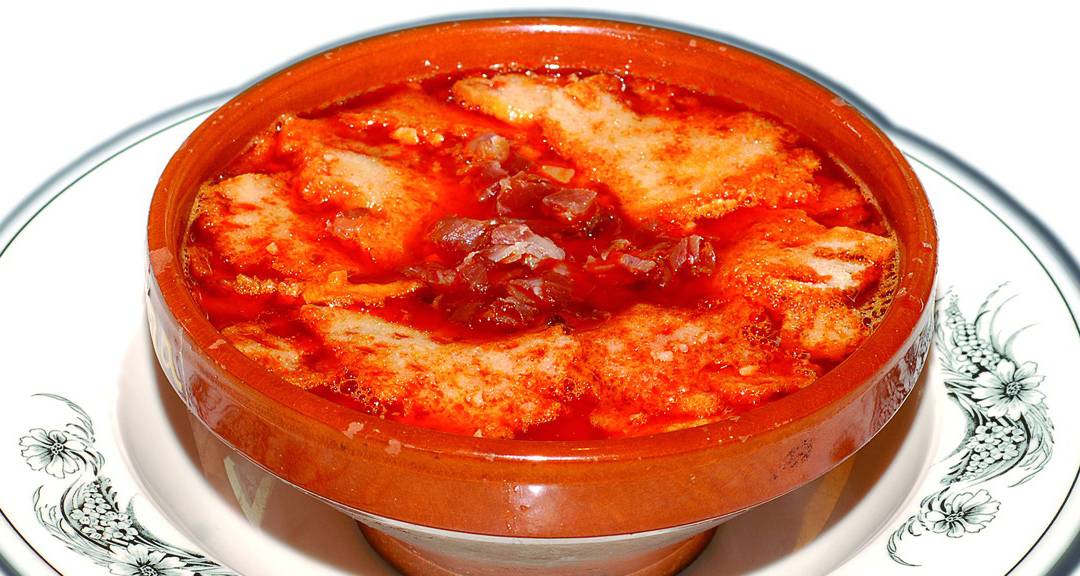
Our culinary journey begins in Castilla y León, where the aroma of Sopa de ajo fills the air during Semana Santa. Also known as sopa castellana, this hearty soup is a popular choice, especially after the gruelling processions of Viernes Santo. Made with garlic, paprika, eggs, olive oil, and bread instead of noodles, this dish has its roots in frugality, using leftover bread from previous days. Sopa de ajo is a comforting and flavourful dish that warms both the body and soul.
Patatas viudas, La Rioja

Travelling to La Rioja, we encounter another Easter staple, the Patatas viudas. The name, which translates to "widow potatoes," pays homage to the absence of meat in this traditional dish. Made with potatoes, peppers, onions, garlic, paprika, olive oil, salt, and bay leaves, this simple yet delicious recipe captures the essence of La Rioja's culinary heritage.
Garbanzos con espinacas, Seville
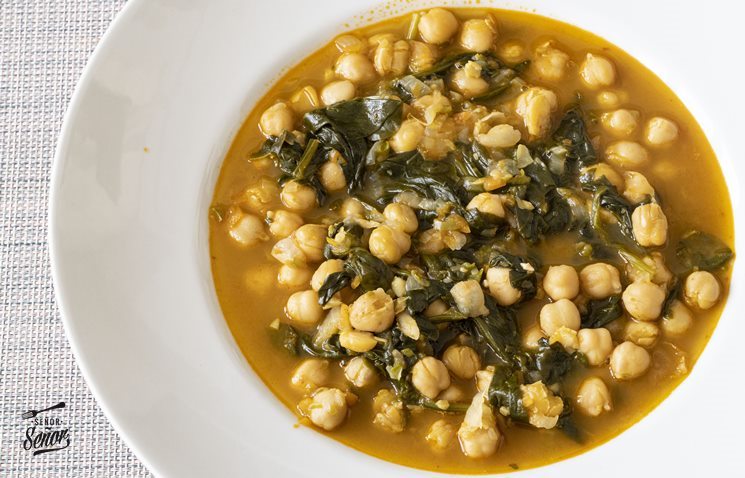
A trip to Seville during Semana Santa would be incomplete without tasting Garbanzos con espinacas. A popular alternative to the traditional 'potaje', this dish features chickpeas and spinach, creating a flavoursome and hearty meal. Garbanzos con espinacas showcases the culinary diversity of Seville and is a must-try for those exploring the region's gastronomic traditions.
Bacalao al pil pil, Basque Country

In the Basque Country, Easter is synonymous with Bacalao al pil pil, a dish that exemplifies the region's love for cod. Made with cod, garlic, olive oil, and a touch of spice from chillies or cayenne pepper, Bacalao al pil pil is a delicacy that tantalises the taste buds. The luscious sauce created from the gelatin released by the fish during cooking adds a richness and depth of flavour to this iconic Basque dish.
Pa torrat, Alicante

Journeying to the province of Alicante, we discover Pa torrat, a traditional dish that has been enjoyed by locals for centuries. Consisting of bread drizzled with olive oil, garlic, and cod, Pa torrat has its origins in the 19th century when it became a popular choice for the faithful looking to refuel during Viernes Santo. Pa torrat continues to be a cherished dish during Easter, often complemented with other ingredients to suit individual tastes.
Hornazo, Zamora
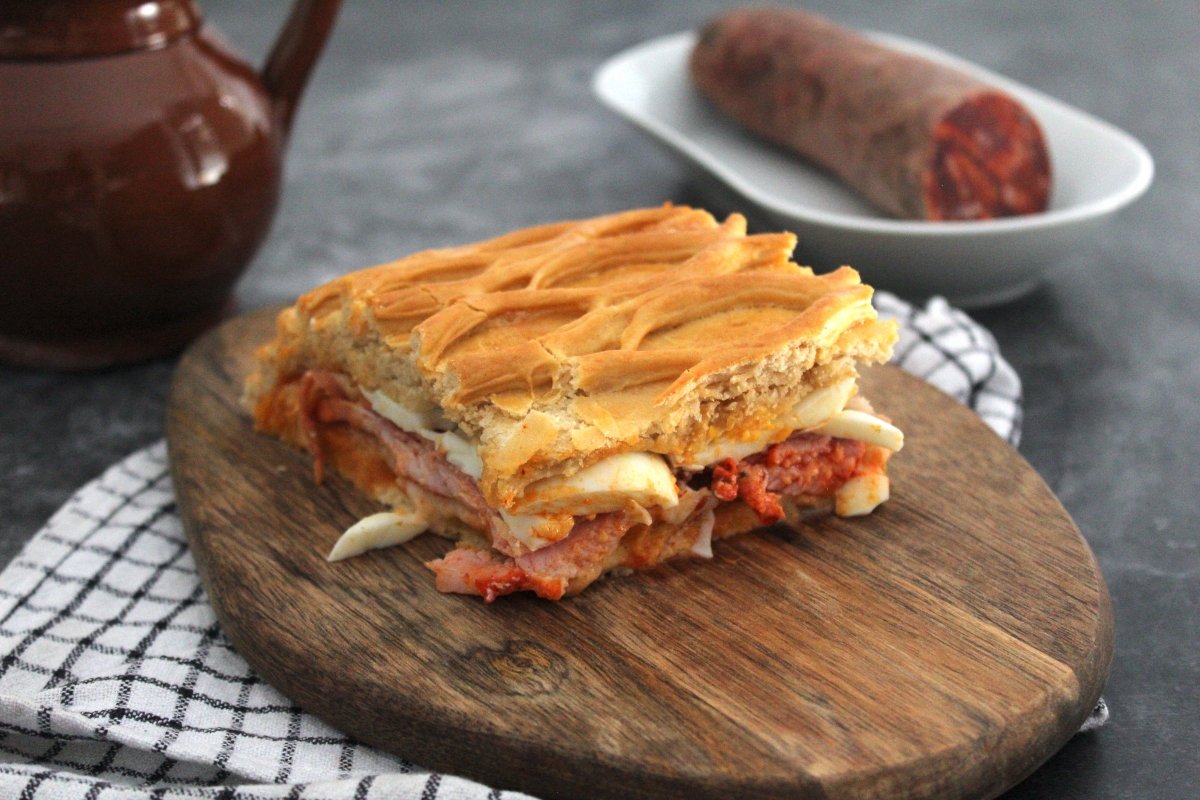
In Zamora, particularly in Salamanca, Hornazo takes centre stage as a savoury treat enjoyed during the post-Easter festivities known as Lunes de Aguas. This empanada-style dish is filled with a medley of ingredients such as chorizo, pork loin, bacon, and boiled eggs, creating a symphony of flavours that delight the palate. Hornazo is a gastronomic tradition that celebrates the end of Lent and the return to indulging in meat once again.
Tortillas de camarón, Cádiz
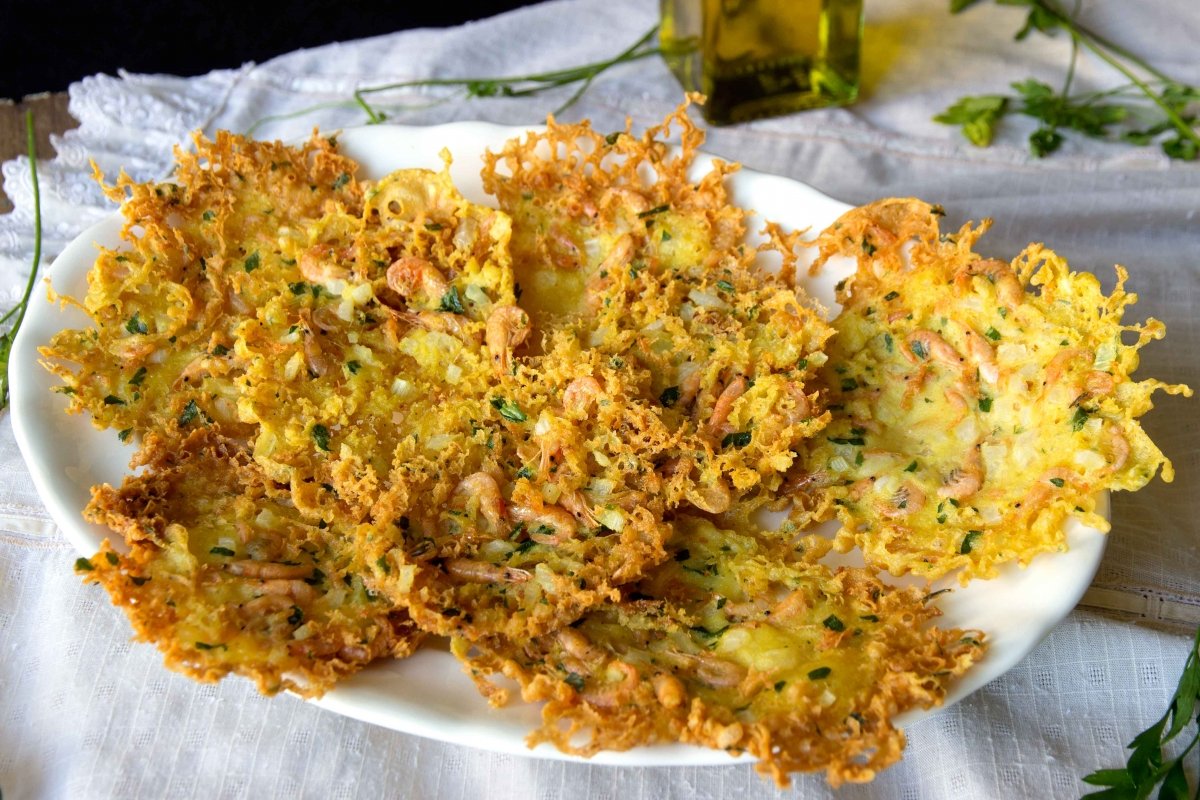
Heading south to Cádiz, we encounter Tortillas de camarón, a popular choice of appetiser during Semana Santa. These crispy prawn fritters are a delightful accompaniment to the festivities, crafted from prawns, chickpea flour, onions, parsley, and a hint of spice. Tortillas de camarón showcase the culinary ingenuity of Cádiz and are a true testament to the region's seafood heritage.
Monas de pascua, Mediterranean region

As Easter approaches, the allure of sweet treats takes centre stage across Spain. Monas de pascua, a traditional Easter pastry, is a beloved delicacy in various regions such as Murcia, Valencia, Catalonia, and Castilla-La Mancha. This round bread-like pastry with a central egg, whether boiled or chocolate, symbolises new beginnings and abundance, making it a cherished Easter tradition for families and communities.
Pestiños, Andalusia

Delving into the world of sweet delights, we discover Pestiños, a Moorish-inspired treat that captivates the taste buds of those in Andalusia. These square-shaped pastries are crafted from flour, lard, white wine, aniseed, and citrus zest, offering a perfect balance of textures and flavours. Pestiños are often drizzled with sugar or honey, adding a touch of sweetness to this iconic Easter indulgence.
Leche frita, Palencia

Hailing from Palencia in the north of Spain, Leche frita is a popular dessert beloved for its creamy texture and comforting aroma. This delectable sweet is made from milk, flour, and sugar, cooked until thickened to create a velvety custard. It is often served with a sprinkling of cinnamon, sugar, chocolate, coconut, lemon zest, or caramel, adding a delightful twist to this classic Easter treat.
Torrijas and Buñuelos

No Easter feast in Spain would be complete without the presence of Torrijas and Buñuelos, two ubiquitous desserts that have stood the test of time. Torrijas, made from bread soaked in milk, cinnamon, egg, and sugar, offer a decadent and indulgent treat. Meanwhile, Buñuelos, a staple in Madrid, are delectable fritters that boast a light and airy texture, perfect for satisfying sweet cravings during the Easter celebrations.
Semana Santa in Spain is not only a time of reflection and spirituality but also a time to indulge in the country's diverse culinary landscape. From savoury delights to sweet temptations, the traditional dishes of Easter in Spain offer a glimpse into the rich tapestry of flavours that define the nation's gastronomy. So, as you immerse yourself in the Easter festivities, remember to savour these unique and time-honoured dishes that exemplify the essence of Spanish culinary heritage
 2
Like
Published at 11:59 AM Comments (7)
2
Like
Published at 11:59 AM Comments (7)
Iberian Pork and Chorizo Casserole
Saturday, March 23, 2024
When the weather is really cold, as it happens to be at the moment in England, few things are better than a hot slow-cooked stew to satisfy your appetite. Something wholesome to warm 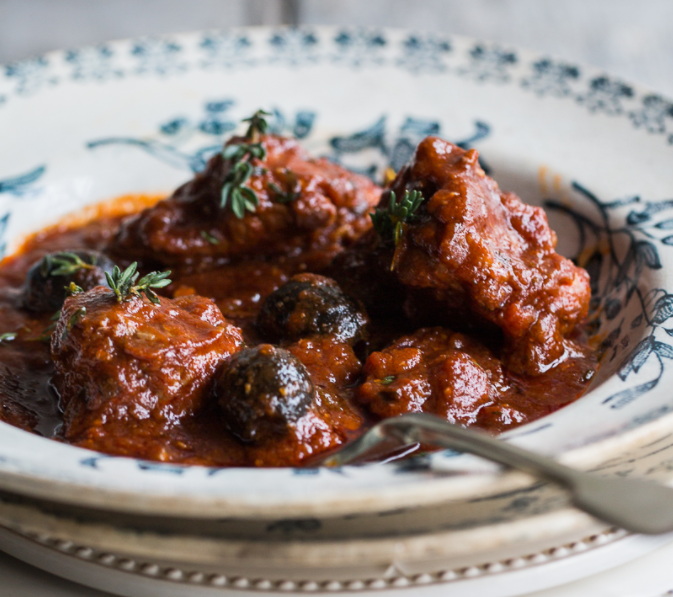 the body. Today I bring you another interesting recipe made with typically Spanish ingredients. A beautifully rich and flavoursome braised pork and chorizo stew. If you have never tried it, it is well worth a go! Who doesn't like chorizo? Unless you are vegetarian of course. It is a recipe I love to accompany with mashed potatoes, not particularly Spanish though! the body. Today I bring you another interesting recipe made with typically Spanish ingredients. A beautifully rich and flavoursome braised pork and chorizo stew. If you have never tried it, it is well worth a go! Who doesn't like chorizo? Unless you are vegetarian of course. It is a recipe I love to accompany with mashed potatoes, not particularly Spanish though!
Although this is not a traditional recipe as such, the result couldn't be more Spanish. Although now isn't an ideal time for getting families together around a table, it is a recipe that will work wonders when feeding numbers. I love how the combination of pork shoulder and chorizo is complemented by the tanginess of the black olives and the sweetness from the paprika to create a tastebud bomb of a recipe which will definitely be a hit.
So why not give it a go and try out this delicious braised pork and chorizo stew. Don't forget the secret to a fantastic result is patience and slow cooking. It takes the time it takes, you just can't rush it. For six people you will need the following - if it is too much, you can always freeze the extra.
INGREDIENTS:
225g chorizo fresh cooking sausage - at most semi-cured
4 tablespoons Extra virgin olive oil
1 kg of lean Iberian pork shoulder, cut into large 3 cm cubes
180 ml of red wine - Crianza is ideal - Mercadona sell a great Crianza for €2,2 (Torre Oria)
2 medium onions, finely chopped
6 large garlic cloves, finely chopped
2 teaspoons sweet smoked paprika
2 tablespoons tomato puree
400g of ripe chopped, skinned plum tomatoes - you can also use tinned
400ml fresh chicken stock - or ready-made stock from the supermarket if you don't have any.
4 springs of thyme, leaves only
2 tablespoons of fresh oregano, chopped
4 bay leaves
3 tablespoons sherry vinegar
salt & pepper
2 teaspoons of caster sugar
110g pitted black olives
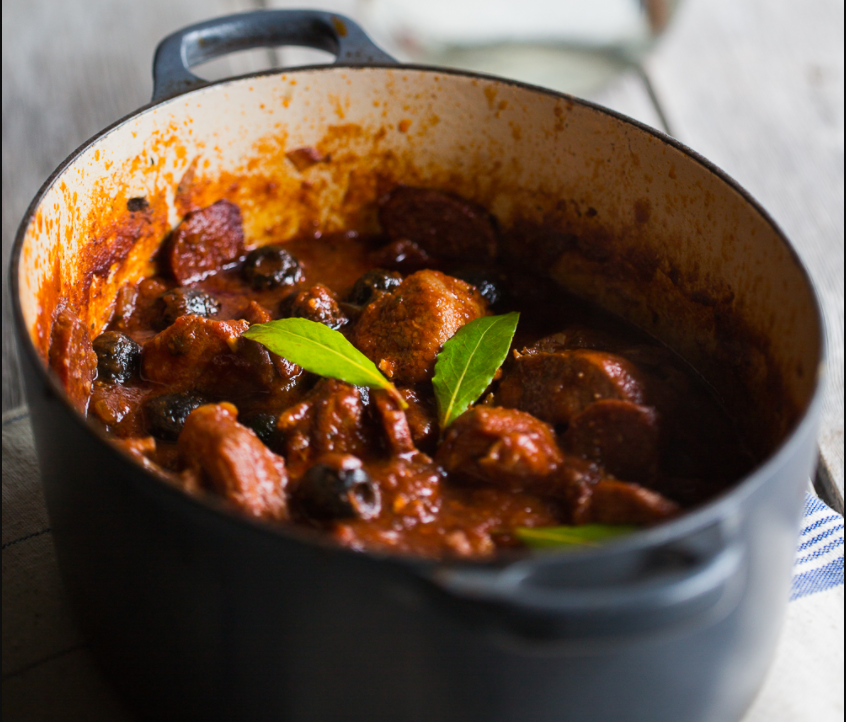
INSTRUCTIONS
1. Heat 2 tablespoons of extra virgin olive oil in a large frying pan.
2. Skin and thickly slice the chorizo, add to the heated frying pan and fry on medium heat for 2-3 minutes until the chorizo is lightly browned.
3. Using a slotted spatula, put the chorizo into a large, casserole pot, I use my old faithful Le Creuset pot. Try to keep as much of the oil as possible in the frying pan.
4. Add another tablespoon oil to the frying pan if necessary and brown the pork in batches before adding to the casserole pot.
5. Pour the wine into the frying pan and let it to come to a simmer, deglazing any of the caramelised meat juices stuck to the bottom of the pot. Cook for a few minutes to burn off the alcohol and then pour into the casserole pot.
6. Lower the heat, add the remaining oil and chopped onions to the frying pan and fry gently for 10 minutes or until soft, adding a little more oil if necessary. Add the chopped garlic to the onions and fry for a further 2-3 minutes.
7. Stir in the paprika and then add the tomato puree, chopped tomatoes, chicken stock and herbs. Cook for a couple of minutes and then pour it all over the chorizo and pork in the casserole pot and mix it up well. Season with salt and pepper.
8. Bring the casserole pan to a quick simmer, turn the heat right down to a minimum and cover. Cook for at least 1 hour, stirring from time to time.
9. In a small pan, boil the sherry vinegar and caster sugar until it has reduced to about a teaspoon. Then stir it into the casserole with the black pitted olives.
10. Simmer uncovered for 30 minutes, or until the pork is really tender.
Serve with mashed potatoes or rice or simply eat it on its own with some crusty bread.
Enjoy!
 2
Like
Published at 1:18 PM Comments (0)
2
Like
Published at 1:18 PM Comments (0)
Arroz Negro from Valencia - Black Paella
Saturday, March 9, 2024
Spain, known for its vibrant culture, beautiful architecture, and rich history, is also home to a culinary treasure trove that's deserving of as much recognition and adulation - Spanish cuisine. At the heart of this gastronomic feast, is the delicious, tantalizing, and ever so unique 'Arroz Negro' or Black Rice.
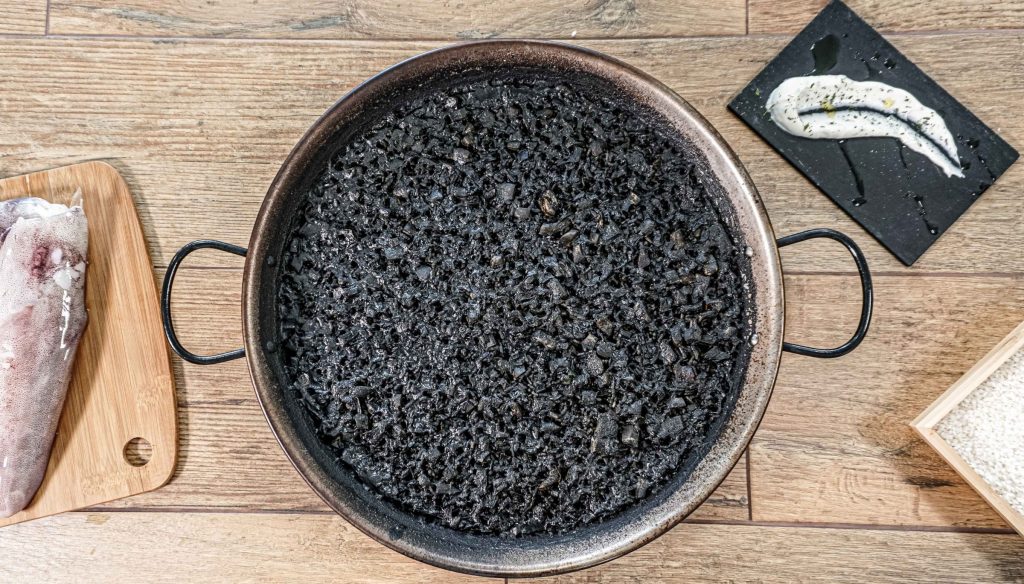
This dish, despite its slightly ominous name, is a party of flavours and textures. It is a canvas on which the cook paints with luminous sepia ink, a rich seafood broth and a medley of fragrant spices. In short, this is a recipe that encapsulates the zest and charm of Spanish coastal gastronomy.

Arroz Negro, or black rice, hails from the beautiful seaside territories of Valencia. Predominantly a rice- and seafood-based dish, black rice earns its moniker not from the hue of the rice, but from the use of squid or cuttlefish ink, which lends the dish its characteristic dark colour. This delightful gastronomic marvel is primarily found along the coastal regions of Spain, but has quickly found itself adorning plates and pleasing palates globally.
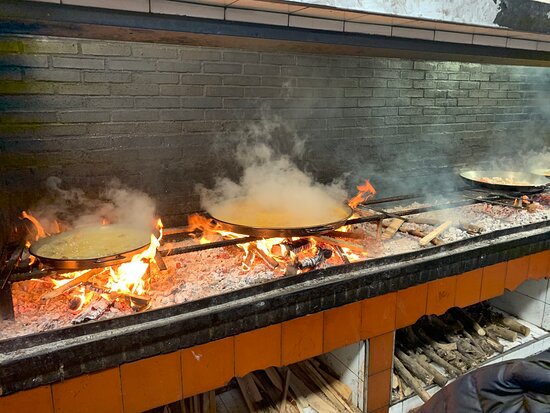
Ingredients
To embark on this recipe to create Arroz Negro, the following ingredients are needed:
-
300g of Bomba rice.
-
200g of cleaned baby squid and 150g of peeled king prawns
-
1 litre of fish or shellfish stock/fumet - I prefer shellfish (You can buy ready-made or make it fresh)
-
2 sachets of squid ink
-
1 large onion, finely chopped
-
3 cloves of garlic, minced
-
2 large ripe tomatoes, peeled and chopped 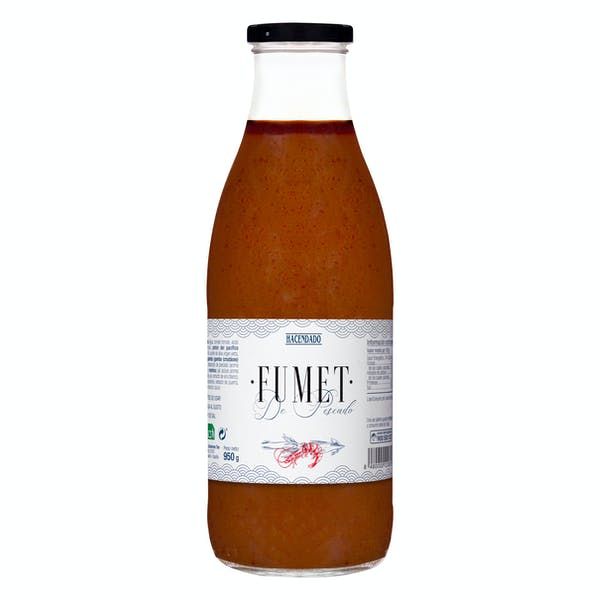
-
1 red bell pepper, finely chopped
-
Spanish olive oil
-
Salt and pepper to taste
This recipe serves approximately 4 people.
A Friendly Note:
While squid ink is a key ingredient in this recipe and imparts a truly unique flavour, it can be difficult to find in local markets outside Spain. You could explore online options or speciality stores for availability. However, in Spain, you will find it in the frozen fish section of most supermarkets, at least in Valencia.
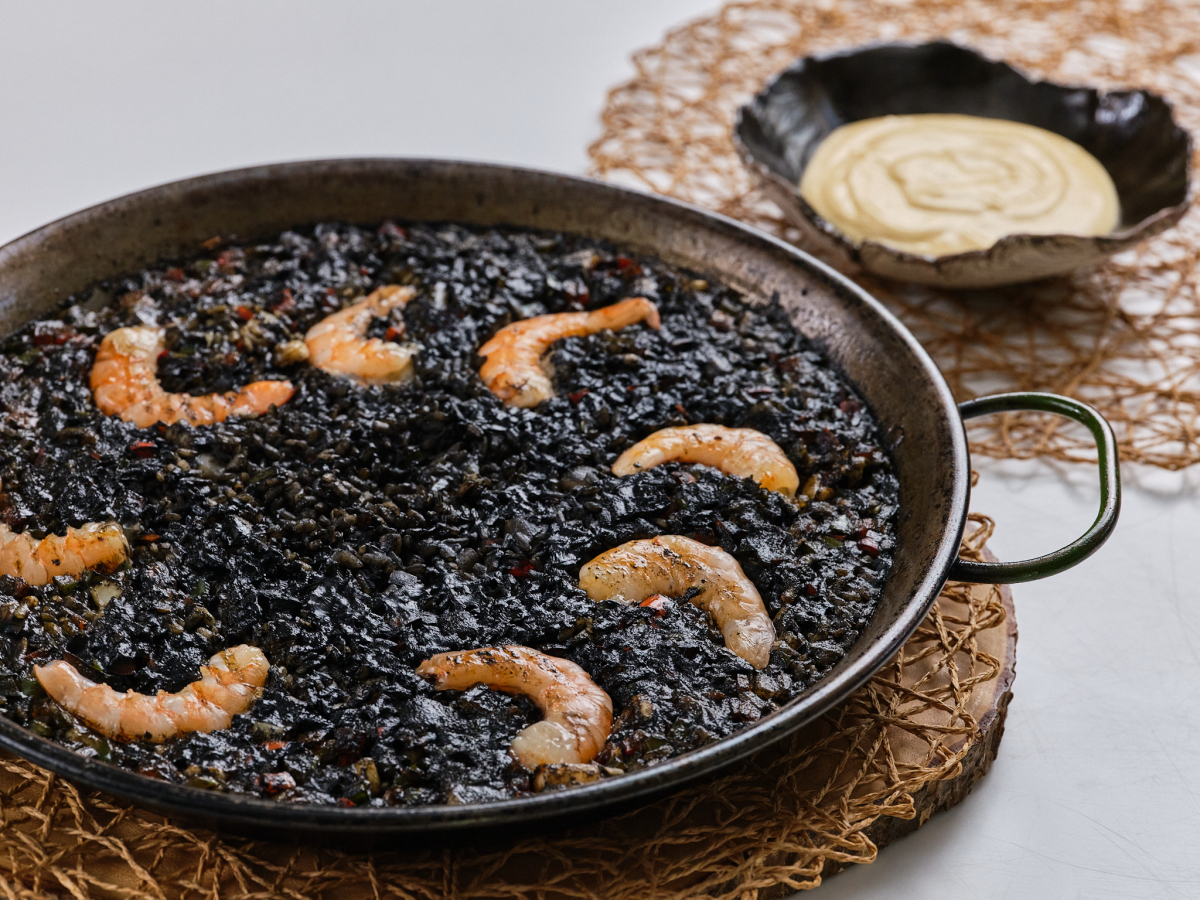
Step by Step Instructions
Heat a wide, flat-bottomed pan, ideally a paella pan, and add some Spanish extra virgin olive oil. Once heated, add the finely chopped onion and red bell pepper, and sauté until they soften.
Next, stir in the minced garlic and cook until everything is beautifully golden and aromatic. Add the chopped tomatoes, and continue to cook until the tomatoes are softened. Once the tomatoes have reduced, add some water and reduce once again. Repeat this three times.
Meanwhile, in a separate pan, heat the shellfish stock until it's simmering. You will need this warmed later.
Returning to your sauteé, it's now time to add your cleaned squid. Cook it for a few minutes until it changes colour. Next, stir in the squid ink, ensuring that it's mixed in thoroughly with the rest of the ingredients. The pan will now showcase a symphony of dark hues.
Now, add the rice to the pan, and stir well to distribute the squid ink evenly. Pour over your simmering shellfish stock, and season with salt and pepper. Simmer, uncovered, on high heat for 5 minutes then reduce to lower heat for a further 13 minutes until the rice is cooked and all the stock has evaporated, but it should still retain a bite - almost al dente.
During the last 8 minutes or so add the raw prawns to the paella - make sure you still have some stock above the surface of the rice.
Let the dish rest for 5 to 10 minutes before serving, this allows all the flavours to meld together and for the rice to finish cooking through. It does take a bit of practice so if it doesn't work out the first time, keep trying! Try to use Arroz Bomba, it will be more forgiving on the cooking times!
This hearty dish, although distinct and layered with complex flavours, is fairly simple to create. It encapsulates the beauty of Spanish cooking – the use of straightforward yet flavourful ingredients to create something memorable.
Whether you're a seasoned chef or a home cook, there is always a joy that comes with the unveiling of a dish like Arroz Negro. Cooking, after all, is not just about feeding our bodies, but also wowing our senses.
Arroz Nego is served with Allioli - garlic mayonnaise - click here to learn how to make it.
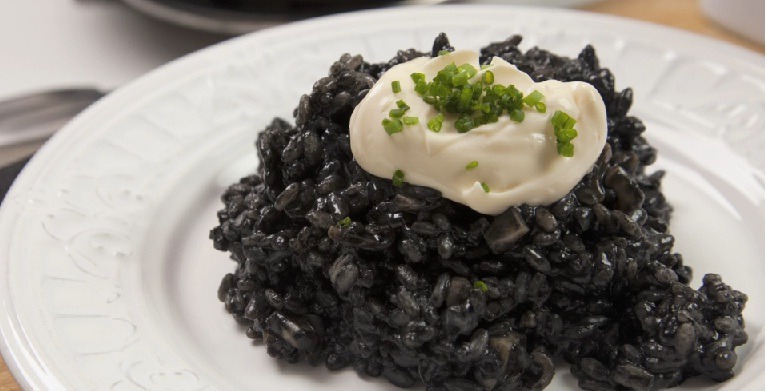
Pair it with a glass of white Spanish Albariño white wine for a truly ethereal gastronomic exploration!
Enjoy your culinary journey, and remember — the beauty of cooking lies as much in the process as it does in the final dish!
¡Buen Provecho!"
 1
Like
Published at 9:50 AM Comments (1)
1
Like
Published at 9:50 AM Comments (1)
Spam post or Abuse? Please let us know
|
|